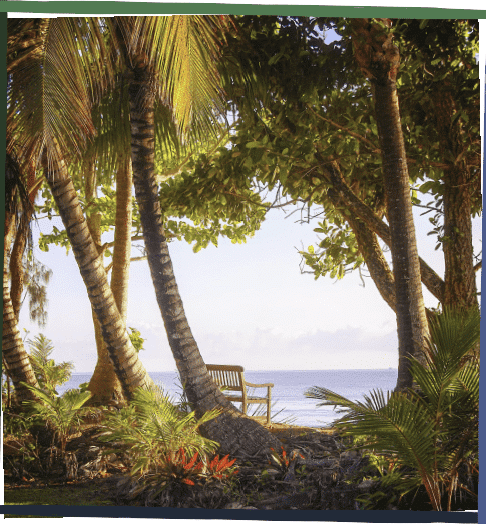The Philippines is a beautiful country in Southeast Asia with a lot to offer investors and expats alike. It has a growing economy, a young and educated workforce, and a low cost of living. If you’re considering investing in or moving to the Philippines, this guide will provide you with all the information you need to get started.
Brief Overview of the Location
The Philippines is an archipelago of over 7,000 islands located in Southeast Asia. It is the 12th most populous country in the world, with over 109 million people. The capital of the Philippines is Manila, which is also the most populous city.
The Philippines has a rich history dating back over 5,000 years. It was once a colony of Spain and the United States. The Philippines gained independence from the United States in 1946.
The Philippines is a popular tourist destination, known for its beautiful beaches, lush rainforests, and friendly people. The Philippines is also a popular destination for investors, due to its growing economy and low cost of living.
Historical Background
Around 30,000 years ago, humans first began to live in the Philippines. The first known inhabitants were the Negritos, who are a group of dark-skinned people with curly hair. Later, in the 16th century, the Spanish colonized the Philippines. The Spanish ruled the Philippines for over 300 years, during which time they introduced Christianity and Western culture to the country. The Philippines was ceded to the United States after the Spanish-American War in 1898. The United States ruled the Philippines for over 40 years, during which time they built infrastructure and schools. The Philippines gained independence from the United States in 1946. Since then, the Philippines has become a democratic republic.
Current Status/Popularity
The Philippines is currently a popular destination for investors and expats. The country has a growing economy, a young and educated workforce, and a low cost of living. The Philippines is also a popular tourist destination, known for its beautiful beaches, lush rainforests, and friendly people. The Philippines is home to a number of world-class resorts and tourist destinations, such as Boracay, Palawan, and Cebu.
Geographical Features
The Philippines is an archipelago of over 7,000 islands. The largest island is Luzon, which is home to the capital city of Manila. Other major islands include Mindanao, Visayas, and Palawan.
The Philippines has a tropical climate, with warm temperatures and high humidity year-round. The rainy season is from June to September.
Cultural Heritage
The Philippines is a melting pot of cultures, with influences from Spain, the United States, China, and Japan. The country’s culture is vibrant and diverse, with a wide variety of festivals, dances, and music. The Philippines is also home to a number of world-renowned artists, writers, and musicians.
Notable Landmarks or Attractions
The Philippines is home to a number of notable landmarks and attractions, including:
- The Rizal Park in Manila: This is a national park dedicated to the country’s national hero, Jose Rizal.
- The Chocolate Hills in Bohol: These are a group of over 1,700 hills that are covered in green grass for most of the year, but turn brown during the dry season.
- The Banaue Rice Terraces in Ifugao: These are a series of ancient rice terraces that have been carved into the mountains.
- The Taal Volcano in Batangas: This is an active volcano that is located in a lake.
- The White Beach in Boracay: This is a beautiful white sand beach that is one of the most popular tourist destinations in the Philippines.
Living in the Location
Expat Community
The Philippines has a large expat community, with over 1 million foreigners living in the country. The expat community is made up of people from all over the world, including the United States, Canada, the United Kingdom, and Australia. The expat community in the Philippines is very active, and there are a number of organizations and clubs that cater to expats. There are also a number of English-language schools and churches that cater to expats.
Cost of Living
The cost of living in the Philippines is very low, compared to other countries in Southeast Asia. A single person can live comfortably on a budget of $1,000 per month. This includes rent, food, transportation, and other expenses.
Housing
The cost of housing in the Philippines varies depending on the location. In major cities, such as Manila, rent can be expensive. However, there are also many affordable housing options available in smaller cities and towns.
Transportation
Public transportation in the Philippines is cheap and efficient. You can get around most cities and towns by bus, jeepney, or tricycle. Taxis are also available, but they can be more expensive.
Utilities
Utilities in the Philippines are also very affordable. Electricity, water, and gas are all relatively cheap.
Food and Entertainment
Food in the Philippines is very affordable. You can eat at local restaurants for a few dollars per meal. There are also a number of international restaurants available, if you’re looking for something different.
Entertainment in the Philippines is also very affordable. There are a number of movie theaters, bars, and clubs available in major cities. You can also enjoy a variety of cultural activities, such as concerts, festivals, and sporting events.
Lifestyle
The lifestyle in the Philippines is very relaxed and laid-back. People are friendly and welcoming, and there is a strong sense of community. There are also a number of opportunities to get involved in volunteer work or other activities that give back to the community.
Weather and Climate
The Philippines has a tropical climate, with warm temperatures and high humidity year-round. The rainy season is from June to September.
Activities and Events
There are a number of activities and events that you can enjoy in the Philippines, including:
- Beaches: The Philippines has some of the most beautiful beaches in the world. You can go swimming, sunbathing, or surfing.
- Mountains: The Philippines also has a number of mountains, which are perfect for hiking and camping.
- Rainforests: The Philippines is home to a number of rainforests, which are teeming with wildlife. You can go hiking, birdwatching, or whitewater rafting.
- Festivals: The Philippines has a number of festivals throughout the year, which are a great way to experience the culture.
- Nightlife: The Philippines has a vibrant nightlife scene, with bars and clubs open late into the night.
Local Amenities
The Philippines has a number of local amenities that expats will appreciate, including:
- English-language schools: There are a number of English-language schools in the Philippines, which are perfect for expats who want to learn the language.
- International hospitals: There are a number of international hospitals in the Philippines, which are staffed by English-speaking doctors and nurses.
- Shopping malls: There are a number of shopping malls in the Philippines, which have a variety of stores and restaurants.
- Western food: There are a number of Western restaurants in the Philippines, which are perfect for expats who are craving home-cooked food.
Diversity and Inclusivity
The Philippines is a very diverse country, with people from all over the world. This makes it a great place for expats who are looking for a multicultural experience. The Philippines is also a very inclusive country, with a strong commitment to human rights.
Safety and Health Care
The Philippines is a generally safe country, with a low crime rate. However, it is important to be aware of your surroundings and take precautions, as petty theft is common.
The health care system in the Philippines is not as developed as in Western countries. However, there are a number of international hospitals in the Philippines that provide high-quality care. It is important to have health insurance if you are living in the Philippines.
Visa and Residency Information for Americans
Americans can apply for a number of different visas to live in the Philippines, including:
- Tourist visa: This visa allows you to stay in the Philippines for up to 30 days.
- Business visa: This visa allows you to stay in the Philippines for up to 59 days.
- Retirement visa: This visa allows you to stay in the Philippines indefinitely, if you are over 50 years old and have a monthly income of at least $1,000.
- Permanent residency visa: This visa allows you to live and work in the Philippines permanently.
The process for obtaining a visa to the Philippines will vary depending on the type of visa you are applying for. It is important to do your research and apply for the visa that is right for you.
Tourist visa: American citizens can stay in the Philippines for up to 30 days without a visa. If you want to stay longer, you can apply for a tourist visa at a Philippine embassy or consulate in the United States.
- 9(a) visa: This visa is for Americans who are married to Filipino citizens. It allows you to stay in the Philippines indefinitely.
- 47(a) visa: This visa is for Americans who are investing in the Philippines. It allows you to stay in the Philippines for up to 5 years.
- Special Resident Retiree’s Visa (SRRV): This visa is for Americans who are over 50 years old and have a monthly income of at least $2,000. It allows you to stay in the Philippines indefinitely.
To apply for a visa, you will need to provide the following documents:
- A valid passport
- A visa application form
- A recent passport-sized photo
- A copy of your birth certificate
- A copy of your marriage certificate (if applicable)
- A copy of your financial statements
- A letter of invitation from a Filipino citizen (if applicable)
The processing time for a visa application can vary, but it is typically a few weeks. Once your visa is approved, you will be issued a visa sticker that you will need to affix to your passport. For more information about visas for Americans moving to the Philippines, you can visit the website of the Philippine Embassy in the United States.
Conclusion
The Philippines is a beautiful country with a lot to offer investors and expats alike. If you’re considering moving to the Philippines, I hope this guide has been helpful.
Here are some final thoughts and recommendations:
- Do your research and learn as much as you can about the Philippines before you move.
- Be prepared for culture shock and be open to new experiences.
- Make friends with locals and learn Tagalog.
- Be patient and don’t expect everything to be perfect.
I hope you enjoy your time in the Philippines!







